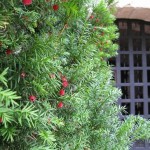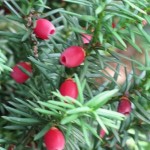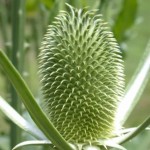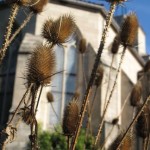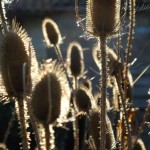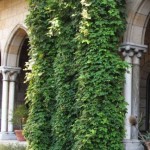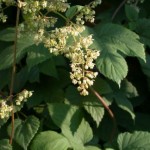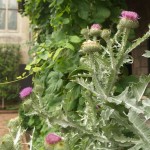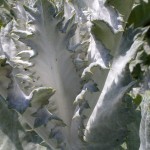The Hallowed Yew
Above, from left to right: A large yew tree (Taxus baccata) growing near the portcullis on the lower drive of The Cloisters; a detail of the yew in fruit in mid-November. The gelatinous red flesh surrounding the seeds is as sweet as it looks, and is innocuous, but the seed itself is very toxic, as are the leaves.
There is here above the brotherhood
A bright tall glossy yew;
The melodious bell sends out a keen clear note
In St. Columba???s church.???Fragment of an Irish poem, ca. 800???1000

